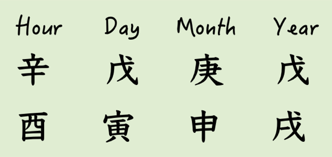The Saju Story

If you know your destiny, you would't blame God for what you get in life.
If you know who you are as a person, you would't blame others for what you get in relationships.-an old Chinese proverb-
by Sarah Kim 3/15/2019
It's All About 'Change'
The story of saju goes far back to the principles of life and destinty conveyed in the I Ching (The Book of Changes), a body of literature that originated in ancient China some five thousand years ago. As Asia's oldest text on the art of divination, I Ching articulates the supremacy of "change" in understanding Nature--that includes the heavens, the earth, and human beings. The book's main message is simple and clear to sustain the test of time: Change is the essence of life; all things are changing all the time.
With nothing staying static and things constantly changing and moving forth, the wise and gifted sages from antiquity had turned to developing the theories that would help people to cope with the chaos and the unpredictability of life. The body of saju principles is one of these theories. These principles of human destiny provides a unique lens to understanding human lives and possibly predicting what's to come. The questions about when and how we change from being alone to developing a signicant relationship, from having little money to making a lot, from being unemployed to getting a job, from staying in one place to traveling to another location, and so forth, are important inquiry points toward understanding ourselves and our destinty.
Saju: The Four Pillars of Destiny
Saju literally means the four pillars. It is a Korean word derived from the following two Chinese (or Han) characters: 四柱. (The word is pronounced variably in different regions of Asia.) The four pillars are constructed by a person's birth year (pillar 1), birth month (pillar 2), birth day (pillar 3), and birth hour (pillar 4). Each of the four pillars are composed of two Han characters--one on top and one on bottom--therefore each saju comes with four pillars and eight characters. To acquire the pillars for a birthdate, we must consult the Ten-Thousand-Year (TTY) Calendar.
A Sample Saju
The image with light green background above contains the saju of the singer Michael Jackson who was born on August 29, 1958 at 7:33 PM. Based on his birthdate, his saju was retrieved from the TTY Calendar that is presently being used worldwide. The TTY Calendar is sometimes referred to as the lunar calendar, but it contains more information than a simple lunar calendar, by providing two Han characters drawn from the sexagenery cycle for each day, month, and year in the calendar.
☯ Mr. Jackson's saju above undoubtedly reveals that he possessed great desire and talents to entertain. All of his passion and energy are directed toward succeeding as an artist and entertainer which he was able to accomplish during his lifetime.
Go to Top